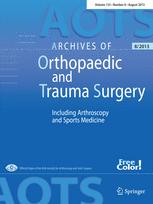
GENERAL ORTHOPAEDICS
Distal targeting device reduces radiation exposure vs freehand method for IM nailing of fractures
Arch Orthop Trauma Surg. 2019 Nov;139(11):1579-1586.36 patients with intertrochanteric or subtrochanteric fractures of the femur receiving intramedullary nailing were randomized to receive insertion of the distal locking screws with a distal targeting device or with the free hand method. Outcomes of interest included radiographic exposure and the accuracy of insertion of the distal locking screws. Results revealed that radiographic exposure was significantly lower in patients who underwent intramedullary nailing with a distal targeting device compared to the free hand method. Furthermore, distal locking screw insertion was significantly more accurate in the distal targeting device group compared to the free hand group.
Unlock the full ACE Report
You have access to {0} free articles per month.Click below to unlock and view this {1}
Unlock NowCritical appraisals of the latest, high-impact randomized controlled trials and systematic reviews in orthopaedics
Access to OrthoEvidence podcast content, including collaborations with the Journal of Bone and Joint Surgery, interviews with internationally recognized surgeons, and roundtable discussions on orthopaedic news and topics
Subscription to The Pulse, a twice-weekly evidence-based newsletter designed to help you make better clinical decisions
Exclusive access to original content articles, including in-house systematic reviews, and articles on health research methods and hot orthopaedic topics
Or upgrade today and gain access to all OrthoEvidence content for just $1.99 per week.
Already have an account? Log in


Subscribe to "The Pulse"
Evidence-Based Orthopaedics direct to your inbox.
{0} of {1} free articles
Become an OrthoEvidence Premium Member. Expand your perspective with high-quality evidence.
Upgrade Now












































































